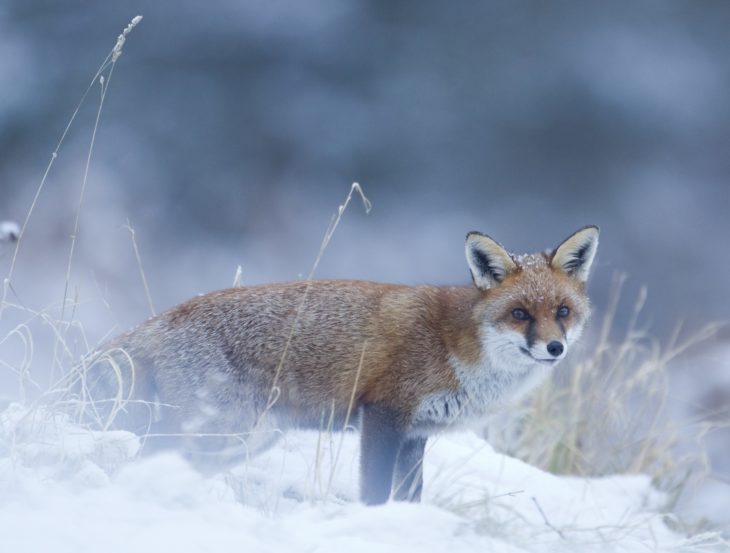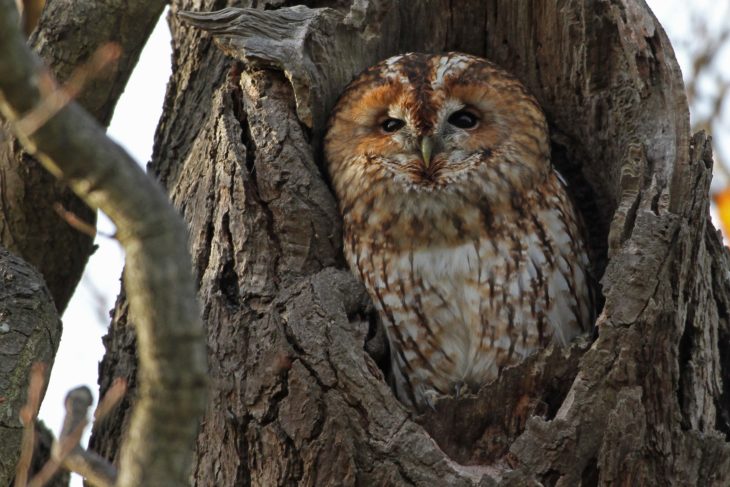What is our winter wildlife up to?
We grow accustomed to the thought that animals are at their most active in the spring and summer, but this isn’t necessarily true for all. Indeed one of our most distinctive garden visitors, the red fox (Vulpes vulpes), is commonly seen and heard at this time of year. This is because young foxes are moving from their natal range to find their own territory. The breeding season also begins during the winter, so you’re likely to hear vocalisations resulting from territorial disputes and during mating.
After breeding has taken place, female foxes will be in search of a den to stay over the winter months. They will wait out their gestation period here, up to 58 days in some cases, and give birth to 4-6 cubs on average. These young are born completely deaf and blind and for around 2-3 weeks the mother will stay with them whilst the father brings food. However, at just four weeks the young will begin to eat more solid foods, start leaving the den and begin to change from brown to orange. It’s amazing to think that this process is all beginning right about now!

Another creature you’ll hear more of at this time of year is the tawny owl (Strix aluco). October- November is the height of activity for ‘Tawnies’, as young birds look for new territories and mature birds fight to hold on to their current patch! Quite often they will be fighting with their own siblings and even parents, as tawny owls are notorious for only moving short distances from their original nest sites.

Finally, the Christmas favourite that we seem to only notice during the winter months – the robin (Erithacus rubecula). Unlike most songbirds the Robin maintains a territory year round, not just during the breeding season, and so they can be heard and even seen fighting during the winter. Look out for these creatures on your next walk around the reserve, or you may even be lucky enough to spot them in your garden!
Jenny Mann, Falls of Clyde Assistant Ranger
Help support our vital work and join us today!
Help protect Scotland’s wildlife
Our work to save Scotland’s wildlife is made possible thanks to the generosity of our members and supporters.
Join today from just £3 a month to help protect the species you love.
Preface
We grow accustomed to the thought that animals are at their most active in the spring and summer, but this isn’t necessarily true for all. Indeed one of our most …
